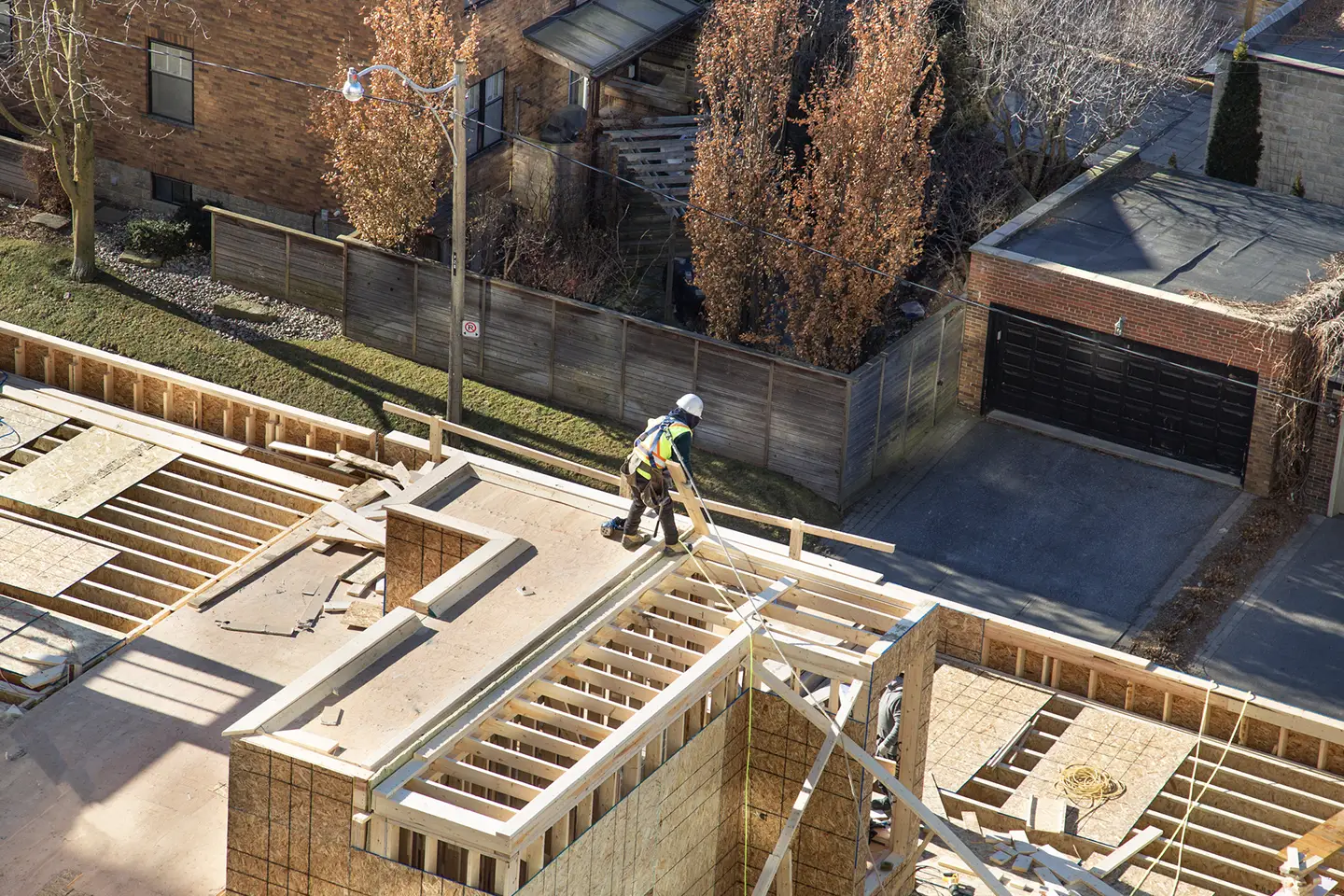Ontario Unveils Third Instalment of Housing Supply Action Plan

Yesterday afternoon, the Honourable Steve Clark, Minister of Municipal Affairs, unveiled the highly-anticipated third instalment of the Ford government’s housing supply action plan: the More Homes Built Faster Act, 2022 and an associated More Homes Built Faster Plan. The Minister called this “…the boldest, most transformational” plan in a generation – and even with the use of these strong words, he may have been underselling the plan.
Coming just one day after the municipal elections, the plan released yesterday provides a blueprint for new municipal governments to work with the private sector and the provincial government to achieve the goal of building 1.5 million new homes over the next 10 years. The More Homes Built Faster Act, 2022 and the accompanying plan serves to further implement recommendations outlined in Ontario’s Housing Affordability Task Force Report that came out in February 2022. The bill amends 9 pieces of legislation and enacts one new Act. In total, there are close to 50 different policy, program or legislative changes. Yesterday’s housing plan also represents the first such plan of the second Ford mandate, with the government committing to produce a new housing supply action plan in each year of the mandate.
Prior to the bill’s introduction yesterday afternoon, elements of the legislation were presented publicly by Minister Clark at a Toronto Region Board of Trade event. Accompanied by Premier Ford, Minister Clark proudly endorsed this third instalment of the government’s housing action plan as a pathway forward to ensuring all Ontarians have the opportunity to afford the right type of housing for them.
Highlights include the following:
Setting Municipal Housing Targets - A key component of the Ford government’s housing plan is to assign housing targets to municipalities based on population size and growth. For example, the City of Toronto has a target of building 285,000 new homes over the next 10 years and the City of Ottawa has a target of 151,000 new homes. Municipalities will need to develop pledges outlining how they will achieve these targets. These pledges do not replace existing municipal plans. The pledges are also not enforced by legislation or regulation, so it is unclear at this time how the province will ensure compliance.
Addressing the “Missing Middle” – The Act serves to further address the “missing middle” through the elimination of certain aspects of exclusionary zoning. Up to three residential units would be permitted “as-of-right" on most land zoned for one home in residential areas without the need for a by-law amendment and would be exempt from development charges and parkland dedication fees. Notably, this “as-of-right" zoning will apply across the province, not just in large cities. However, it does not necessarily allow for the physical expansion of existing residential buildings or the construction of secondary structures.
Building More Homes Near Transit – To build on the gentle density from eliminating exclusionary zoning, the Ford government is also making changes to the Planning Act to create minimum density targets near major transit stations. Once this measure and other key development policies for major transit stations are approved, municipalities will be required to update their zoning by-laws to meet these minimum density targets and will have one year to make these updates.
Supporting the Development of More Affordable and Rental Housing – The new housing plan supports inclusionary zoning, looking to provide developers greater certainty in this area by standardizing inclusionary zoning rules and reducing the cost of such units by exempting them from development charges, parkland dedication levies and community benefits charges. Inclusionary zoning rules set a maximum 25-year affordability period, a five per cent cap on the number of inclusionary zoning units, and a standardized approach to determining the price or rent of an affordable unit under an inclusionary zoning program.
The new housing plan also addresses rental replacement rules, which are generally meant to preserve affordable rents and protect tenants. Rather than setting out specifics in this area, the government will initiate a consultation focused on continuing to protect renters while also building more rental housing. The removal of tenants ‘right to return’ could be hugely contentious if it is ultimately tabled at the end of this consultation process. It would strengthen relationships between NIMBY groups and anti-poverty activists and potentially neutralize the ability of pro-housing groups to mobilize supporters to advocate for developments on a site-by-site basis in urban centres.
Streamlining development approvals – Focused on cutting red tape to avoid delays and succeed at having more homes built faster, the government is also amending the Planning Act to remove site plan control requirements for most projects with fewer than 10 residential units. This action would eliminate red tape by reducing the number of required approvals for small housing projects; it is expected all other housing project timelines would be sped up by freeing up these resources.
Working to accelerate housing proposals, other changes would include focusing responsibility for land use policies and approvals in certain lower-tier municipalities to eliminate the time and costs associated with planning processes by upper-tier municipalities. This would give the local community more influence over decisions that affect them directly, clarify responsibilities, improve efficiency, and speed up development.
Reducing costs, fees, and taxes – The new housing plan highlights that the charges and levies from governments on housing projects can add up to $200,000 to a new unit. Aligned with the government’s commitment to providing Ontarians with “affordable housing” options, proposed changes include the elimination or reduction of development charges, parkland dedication levies and community benefits charges for inclusionary zoning units, attainable housing units and non-profit housing developments through amendments made to the Planning Act, the Development Charges Act, and the Conservation Authorities Act. In addition, to discourage foreign speculation in Ontario’s housing market, the government yesterday increased the province-wide non-resident speculation tax on home sales from 20 to 25 per cent.
The housing plan further seeks to encourage more purpose-built rental construction by reducing development charges on these units; up to a 25 per cent discount for family-sized units (generally, three bedrooms or larger). The province is also calling on the federal government to work with the province on additional GST/HST incentives, including rebates, exemptions, and deferrals, to support new home ownership and rental housing development in the province.
Speeding Up Proceedings at the Ontario Land Tribunal - Building on the over $40 million over three years the government has committed to improve proceedings at the Ontario Land Tribunal, the new housing plan includes legislative changes to speed up proceedings by, for example, giving priority to projects that create the most housing, as well as establishing service standards. The province is committing a further $2.5 million to the Tribunal to support faster dispute resolution and to help reduce the overall caseload at the Tribunal.
What Does This Bill Mean for Municipalities?
Many of the changes will restrict municipalities’ ability to raise or impose fees, qualify their growth, or otherwise impose limits on developments that indirectly make various projects financially unviable. While these rules will provide an ‘out’ for some mayors and councils that want to create more supply despite community opposition, it should be expected that some municipalities will look for new and creative ways to limit opportunities for growth and reinforce local councillors’ sway over the approvals process and timelines.
Something to keep a close eye on is the roll-out of consultations on rental replacement policies. While there is an obvious economic case for ‘right to return’ rules to be removed to facilitate new rental housing developments, this would create tremendous political backlash. This could be the issue that revitalizes left-wing municipal politics in Ontario, providing ample room for large swings in the next round of provincial and municipal elections. In a press conference promising the creation of a Development and Growth Division in early 2023 this morning, Toronto Mayor Tory acknowledged that the loss of affordable rental units could be a problem for the city and also indicated that he would be pursuing higher orders of government to make up for the loss of development charges fees following from the legislation.
No matter what, the roll-out of these cumulative changes are going to rattle municipalities. Where councils make an effort to dig in, positive local political relationships are likely to make a difference for developments caught in the middle.


